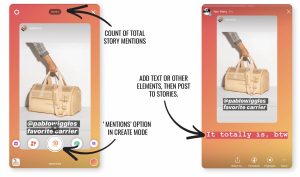New study using facial analysis finds digital channels and ad formats matter for winning customer attention and outcomes.

CTV ads hold viewers’ attention eight times longer than mobile, on average, and 16 times longer than desktop ads, according to a new study using facial tracking on volunteers in the U.S. and Australia.
Ads on CTV achieved 9.7 seconds of “active attention” as measured by the study. Mobile ads clocked in 1.2 to 2.4 seconds, depending on how premium the domain was. Mobile users in the study showed higher intent, so mobile ads were better at driving sales than CTV ads.
The study used facial tracking technology from measurement company Amplified Intelligence.
Why we care. In digital advertising, not all views are equal. Consumers pay more attention depending on the device they use and the environment where the ad appears. Studies that track what catches a viewer’s attention on a busy screen provide an additional layer of data for marketers to consider when they’re budgeting out digital campaigns and approving creative.
Because CTV ads are largely full-screen, this contributes to high active attention scores. This study’s findings also suggest that mobile users are more confident making purchases on personal devices. Overall, even when they aren’t paying as much attention as on CTV, they demonstrate more intent to purchase on mobile.
Branding is key. The study found ads that showed the brand during 25% of the ad’s duration drove higher intent. Consumers who saw those ads were 26% to 38% more likely to purchase.
On mobile and desktop, viewers were more attentive to established brands they recognized.
Also, the study measured whether eyes were merely on the screen or focused on the part of the screen where the ad was, distinguishing active attention and passive attention. Established brands made gains in intent from both active attention and passive attention. For brands that weren’t well-known, passive attention had trouble moving the needle.
Ad performance on mobile and desktop. Despite not receiving as much active attention as CTV, mobile and desktop ads performed better, depending on the ad format.
Billboard and pre-roll ads performed the best on mobile, while skyscraper and pre-roll ads were the top-performing ad formats on desktop.
Methodology. The study used Amplified Intelligence’s attentionTRACE mobile app to track volunteers’ facial expressions and eye movements. This study included 2,000 consumers in the U.S. and Australia watching over 9,000 ads. Yahoo and OMG served as partners for the study.
The post CTV ads beat mobile and desktop for viewer attention appeared first on MarTech.
(10)
Report Post







